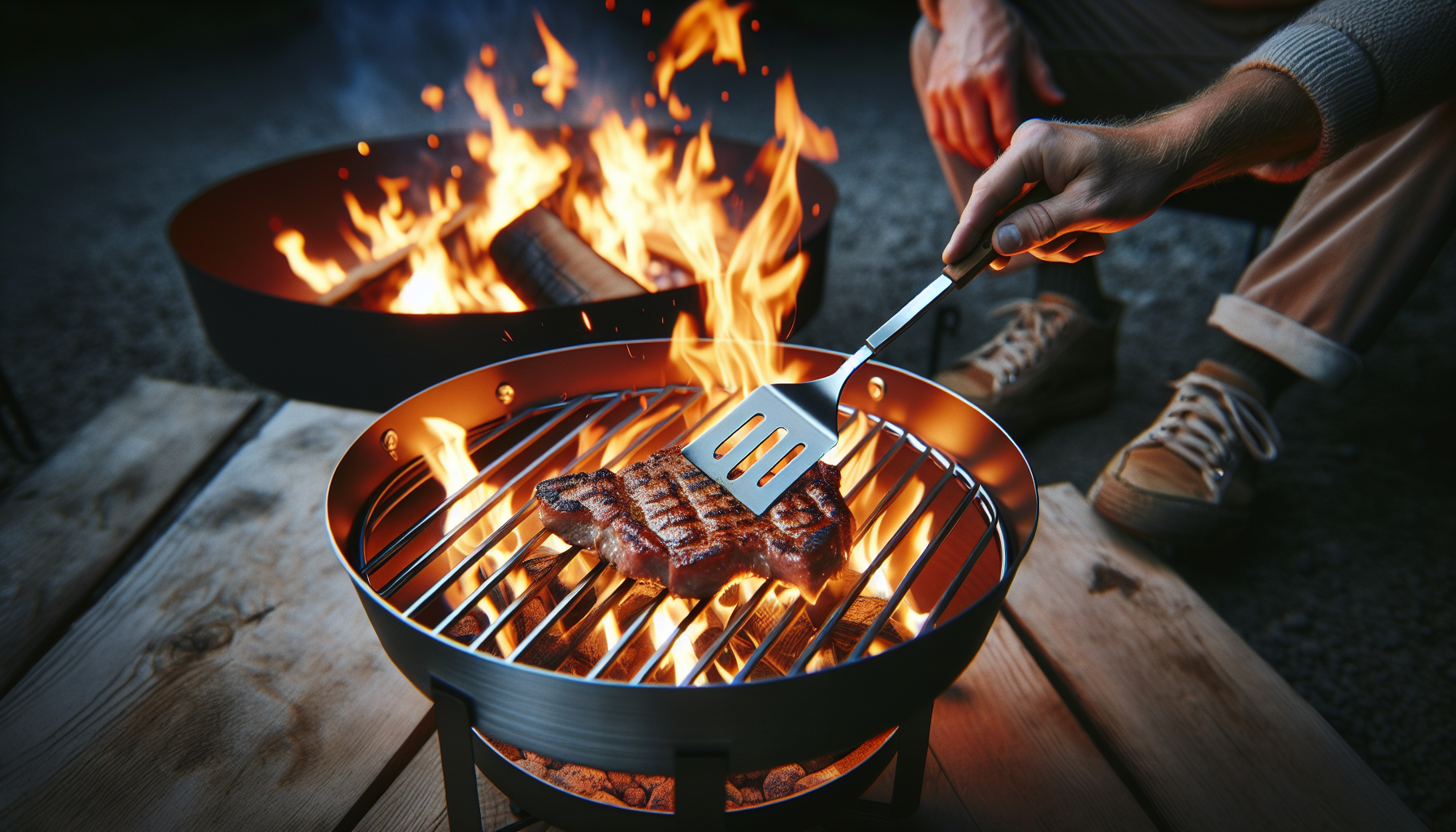When it comes to the art of open fire cooking, choosing the right material can make all the difference. In this article, we will explore the various materials commonly used for cooking over an open fire and discuss their pros and cons. Whether you’re a seasoned outdoor chef or just starting out, read on to discover which material is best suited for your open fire cooking adventures.
Fire Pit Options
When it comes to choosing a fire pit, you have three main options: stone, metal, and brick. Each option has its own unique qualities and features that can enhance your outdoor cooking experience. Let’s take a closer look at each type to help you make an informed decision.
Stone Fire Pit
Stone fire pits are a timeless and classic choice for outdoor cooking. They offer a rustic and natural look that can blend seamlessly with any outdoor setting. Stone fire pits are known for their durability and can withstand high temperatures without cracking or breaking. They also retain heat well, allowing for even cooking and a cozy atmosphere.
One of the benefits of choosing a stone fire pit is its versatility. You can use various types of stones, such as granite, limestone, or sandstone, to create a unique and custom design that suits your style. Stone fire pits can be built into the ground or placed on a patio, providing a solid and stable cooking surface.
The downside of stone fire pits is that they can be heavy and difficult to move, making them less portable than other options. Additionally, they may require regular maintenance, such as sealing or cleaning, to keep them looking their best. However, if you’re looking for a traditional and durable fire pit that adds charm to your outdoor space, a stone fire pit is an excellent choice.
Metal Fire Pit
Metal fire pits, such as those made from cast iron, stainless steel, carbon steel, aluminum, or copper, are another popular choice for open fire cooking. They offer durability, versatility, and often a more modern aesthetic. Metal fire pits are typically portable and easy to move, making them a great option for those who enjoy cooking in different areas of their outdoor space.
One of the advantages of metal fire pits is their excellent heat retention. Cast iron, in particular, is known for its ability to retain heat and distribute it evenly. This means your food will cook consistently and thoroughly. Stainless steel, carbon steel, aluminum, and copper are also good choices for heat retention, although they may not retain heat as well as cast iron.
Durability is another key factor to consider when choosing a metal fire pit. Stainless steel, carbon steel, aluminum, and copper are all resistant to rust and corrosion, making them long-lasting options. Cast iron, on the other hand, may require occasional seasoning to keep it in optimal condition.
One downside of metal fire pits is that they can get hot to the touch, so caution should be exercised when cooking around them. Additionally, some metal fire pits may require regular cleaning and maintenance to prevent build-up and ensure their longevity. Overall, metal fire pits are a versatile and durable choice for open fire cooking.
Brick Fire Pit
Brick fire pits offer a unique and charming appearance that can enhance any outdoor space. They provide a classic and traditional aesthetic that many homeowners love. Brick fire pits are typically made of bricks, mortar, and a fire-resistant lining, which makes them durable and long-lasting.
One of the benefits of brick fire pits is their excellent heat retention. The thick bricks and fire-resistant lining help to trap and radiate heat, resulting in efficient and even cooking. Brick fire pits are also great for providing a warm and cozy ambiance during cooler evenings.
Durability is another advantage of brick fire pits. Bricks are designed to withstand high temperatures, making them resistant to cracking and heat damage. They are also weather-resistant and can withstand the elements without deteriorating.
However, it’s important to note that brick fire pits may require professional installation, especially if you’re building a larger or more complex design. They may also require occasional maintenance, such as resealing or replacing damaged bricks, to ensure their longevity. If you’re looking for a timeless and durable fire pit that adds character to your outdoor space, a brick fire pit is an excellent choice.
Cooking Surface Materials
When it comes to open fire cooking, the choice of cooking surface material is crucial. Different materials offer varying heat retention, durability, heat distribution, maintenance needs, weight, and cost. Let’s explore the most common cooking surface materials and their pros and cons.
Cast Iron
Cast iron is a popular choice for cooking surfaces due to its excellent heat retention and even heat distribution. It can withstand high temperatures and retain heat for extended periods, making it ideal for slow cooking and searing. Cast iron also develops a naturally non-stick surface when properly seasoned, making it easy to cook and clean.
The main drawback of cast iron is its weight. It can be quite heavy, which may limit its portability for some users. Cast iron also requires regular seasoning and maintenance to prevent rust and maintain its non-stick properties. However, with proper care, cast iron cooking surfaces can last a lifetime.
Stainless Steel
Stainless steel cooking surfaces are known for their durability and resistance to corrosion and rust. They heat up quickly and evenly distribute heat, allowing for efficient and consistent cooking. Stainless steel is also easy to clean and maintain, as it does not require seasoning or special treatment.
However, stainless steel may not retain heat as well as other materials. It can cool down quickly, which may result in uneven cooking if not properly managed. Stainless steel can also be more prone to scratches and dents compared to other materials. Nevertheless, for those seeking durability and easy maintenance, stainless steel is a reliable choice.
